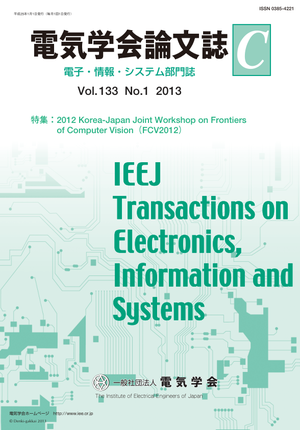A Mobile Guide Robot Capable of Establishing Appropriate Spatial Formations
A Mobile Guide Robot Capable of Establishing Appropriate Spatial Formations
カテゴリ: 論文誌(論文単位)
グループ名: 【C】電子・情報・システム部門
発行日: 2013/01/01
タイトル(英語): A Mobile Guide Robot Capable of Establishing Appropriate Spatial Formations
著者名: Mohammad Abu Yousuf (Department of Information and Computer Sciences, Saitama University), Yoshinori Kobayashi (Department of Information and Computer Sciences, Saitama University/Japan Science and Technology Agency (JST), PRESTO), Yoshinori Kuno (Departm
著者名(英語): Mohammad Abu Yousuf (Department of Information and Computer Sciences, Saitama University), Yoshinori Kobayashi (Department of Information and Computer Sciences, Saitama University/Japan Science and Technology Agency (JST), PRESTO), Yoshinori Kuno (Department of Information and Computer Sciences, Saitama University), Keiichi Yamazaki (Department of Liberal Arts, Saitama University), Akiko Yamazaki (School of Media Science, Tokyo University of Technology)
キーワード: F-formation,guide robot,human-robot interaction,pause and restart,particle filter
要約(英語): This paper presents a model for a mobile museum guide robot that can dynamically establish an appropriate spatial relationship with visitors during explanation of an exhibit. We began by observing and videotaping scenes of actual museum galleries where human guides explained exhibits to visitors. Based on the analysis of the video, we developed a mobile robot system able to guide multiple visitors inside the gallery from one exhibit to another. The robot has the capability to establish a type of spatial formation known as the "F-formation" at the beginning of its explanation after arriving near any exhibit, a feature aided by its ability to employ the "pause and restart" strategy at certain moments in its talk to draw the visitors' attention towards itself. The robot is also able to identify and invite any bystanders around itself into its ongoing explanation, thereby reconfiguring the F-formation. The system uses spatial information from a laser range sensor and the heads of visitors are tracked using three USB cameras. A particle filter framework is employed to track the visitors' positions and body orientation, and the orientations of their heads, based on position data and panorama images captured by the laser range sensor and the USB cameras, respectively. The effectiveness of our method was confirmed through experiments.
本誌掲載ページ: 28-39 p
原稿種別: 論文/英語
電子版へのリンク: https://www.jstage.jst.go.jp/article/ieejeiss/133/1/133_28/_article/-char/ja/
受取状況を読み込めませんでした


